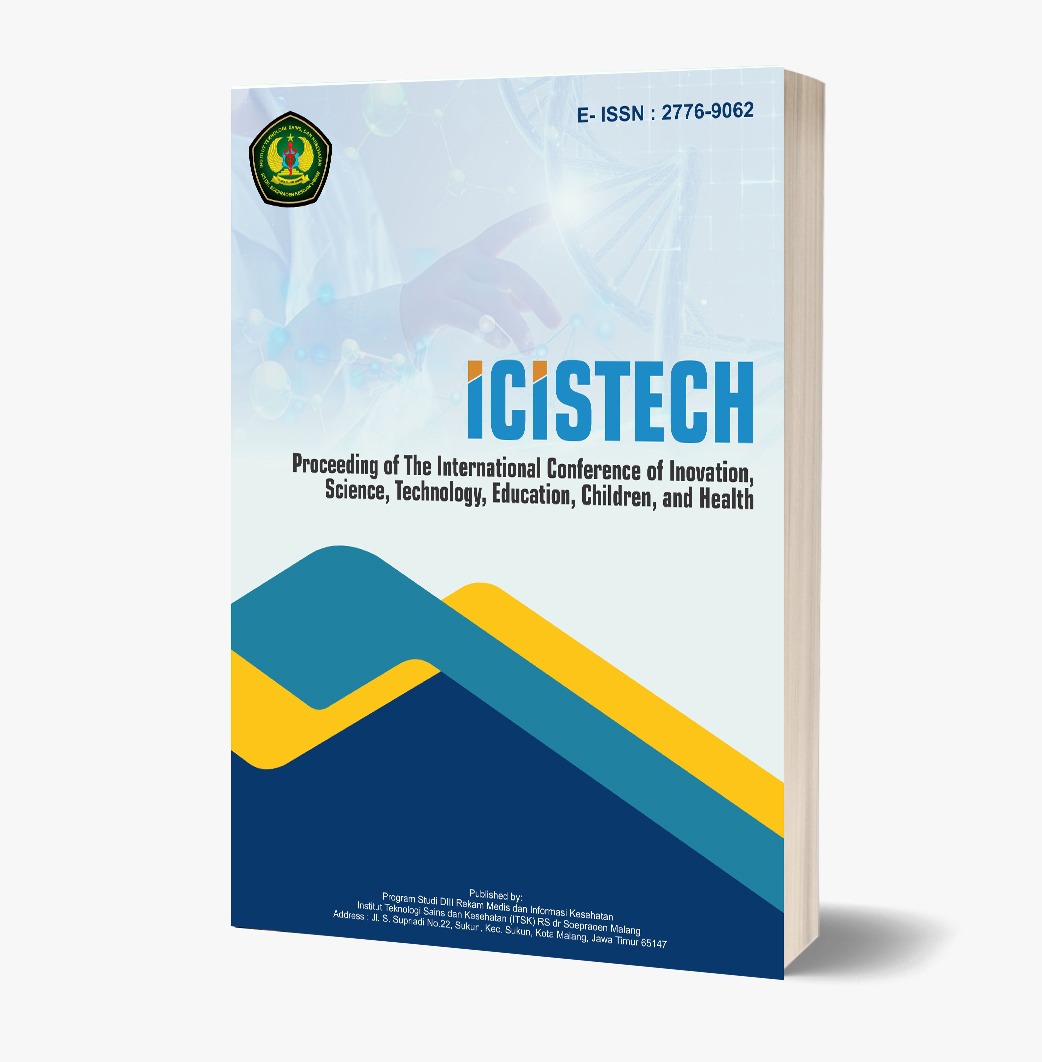Fatty Food Consumption and Stroke Risk Among Older Adults in Indonesia: Analysis of the 2023 Indonesian Health Survey
DOI:
https://doi.org/10.62951/icistech.v5i1.193Keywords:
Elderly, Fatty Foods, Indonesia, SKI 2023, StrokeAbstract
In Indonesia, stroke is the leading cause of illness and death among the elderly. Dietary habits, especially fatty food intake, have been identified as changeable risk factors. Nonetheless, there is a scarcity of national data on this relationship among older Indonesian adults. This study sought to investigate the relationship between fatty food intake and stroke occurrence in elderly Indonesians, utilizing data from the 2023 Indonesian Health Survey (Survey Kesehatan Indonesia or SKI). This cross-sectional study was performed using secondary data from SKI 2023, encompassing 97,339 participants aged 60 years and above. The primary outcome was whether a stroke diagnosis was present (yes/no) and the key independent variable was the consumption of fatty foods (yes/no). Additional variables considered were age, gender, education, marital status, employment, residence, and alcohol use. Weighted descriptive statistics, chi-square tests, and binary logistic regression were conducted using STATA 14.1, with sampling weights applied. The stroke prevalence among elderly participants was 3.2%. The bivariate analysis revealed a significant association between fatty food consumption and stroke (p < 0.001). Multivariate logistic regression showed that elderly individuals who avoided fatty foods had a notably reduced risk of stroke (OR = 0.51, 95% CI: 0.45–0.58, p < 0.001). Alcohol consumption also had a protective effect (OR = 0.22, 95% CI: 0.12–0.43, p < 0.001). There is a significant association between fatty food consumption and stroke among the elderly population in Indonesia. Public health strategies encouraging healthier eating habits could potentially lower the stroke risk in this susceptible group
References
American Heart Association. (2023). Diet and Lifestyle Recommendations.
Astrup, A., et al. (2020). Saturated Fats and Health: A Reassessment and Proposal for Food-Based Recommendations: JACC State-of-the-Art Review. Journal of the American College of Cardiology, 76(7), 844–857. https://doi.org/10.1016/j.jacc.2020.05.077
Biddinger, K. J., et al. (2022). Association of Habitual Alcohol Intake With Risk of Cardiovascular Disease. JAMA Network Open, 5(3), e223849. https://doi.org/10.1001/jamanetworkopen.2022.3849
Boehme, A. K., Esenwa, C., & Elkind, M. S. (2017). Stroke Risk Factors, Genetics, and Prevention. Circulation Research, 120(3), 472–495. https://doi.org/10.1161/CIRCRESAHA.116.308398
Estruch, R., et al. (2013). Primary prevention of cardiovascular disease with a Mediterranean diet. New England Journal of Medicine, 368(14), 1279–1290. https://doi.org/10.1056/NEJMoa1200303
Estruch, R., et al. (2018). Primary Prevention of Cardiovascular Disease with a Mediterranean Diet Supplemented with Extra-Virgin Olive Oil or Nuts. New England Journal of Medicine, 378(25), e34.
Estruch, R., et al. (2018). Primary Prevention of Cardiovascular Disease with a Mediterranean Diet Supplemented with Extra-Virgin Olive Oil or Nuts. New England Journal of Medicine, 378(25), e34. https://doi.org/10.1056/NEJMoa1800389
Feigin, V. L., et al. (2024). Global, regional, and national burden of stroke and its risk factors, 1990–2021: a systematic analysis for the Global Burden of Disease Study 2021. The Lancet Neurology, 23(10), 973–1003. https://doi.org/10.1016/S1474-4422(24)00369-7
Feigin, V. L., et al. (2025). World Stroke Organization: Global Stroke Fact Sheet 2025. International Journal of Stroke, 20(2), 132–144. https://doi.org/10.1177/17474930241308142
He, K., et al. (2003). Dietary fat intake and risk of stroke in male US healthcare professionals: 14 year prospective cohort study. BMJ, 327(7418), 777–782. https://doi.org/10.1136/bmj.327.7418.777
Kang, Z. Q., Yang, Y., & Xiao, B. (2020). Dietary saturated fat intake and risk of stroke: Systematic review and dose-response meta-analysis of prospective cohort studies. Nutrition, Metabolism and Cardiovascular Diseases, 30(2), 179–189. https://doi.org/10.1016/j.numecd.2019.09.028
Katan, M., & Luft, A. (2018). Global Burden of Stroke. Seminars in Neurology, 38(2), 208–211. https://doi.org/10.1055/s-0038-1649503
Lakkur, S., & Judd, S. E. (2015). Diet and Stroke: Recent Evidence Supporting a Mediterranean-Style Diet and Food in the Primary Prevention of Stroke. Stroke, 46(7), 2007–2011. https://doi.org/10.1161/STROKEAHA.114.006306
Maki, K. C., Dicklin, M. R., & Kirkpatrick, C. F. (2021). Saturated fats and cardiovascular health: Current evidence and controversies. Journal of Clinical Lipidology, 15(6), 765–772. https://doi.org/10.1016/j.jacl.2021.09.049
Ministry of Health, Indonesia. (2018). Basic Health Research (Riskesdas).
Mozaffarian, D., Micha, R., & Wallace, S. (2010). Effects on coronary heart disease of increasing polyunsaturated fat in place of saturated fat: a systematic review and meta-analysis of randomized controlled trials. PLoS Medicine, 7(3), e1000252. https://doi.org/10.1371/journal.pmed.1000252
O'Donnell, M. J., et al. (2016). Global and regional effects of potentially modifiable risk factors associated with acute stroke in 32 countries (INTERSTROKE): a case-control study. The Lancet, 388(10046), 761–775. https://doi.org/10.1016/S0140-6736(16)30506-2
Popkin, B. M. (2006). Global nutrition dynamics: the world is shifting rapidly toward a diet linked with noncommunicable diseases. American Journal of Clinical Nutrition, 84(2), 289–298. https://doi.org/10.1093/ajcn/84.2.289
Popkin, B. M. (2014). Nutrition, Agriculture and the Global Food System in Low and Middle Income Countries. Food Policy, 47, 91–96. https://doi.org/10.1016/j.foodpol.2014.05.001
Powell-Wiley, T. M., et al. (2021). Obesity and Cardiovascular Disease: A Scientific Statement From the American Heart Association. Circulation, 143(21), e984–e1010. https://doi.org/10.1161/CIR.0000000000000973
Rachmi, C. N., Li, M., & Baur, L. A. (2017). Overweight and obesity in Indonesia: prevalence and risk factors—a literature review. Public Health, 147, 20–29. https://doi.org/10.1016/j.puhe.2017.02.002
Ronksley, P. E., et al. (2011). Association of alcohol consumption with selected cardiovascular disease outcomes: a systematic review and meta-analysis. BMJ, 342, d671. https://doi.org/10.1136/bmj.d671
Siri-Tarino, P. W., et al. (2010). Meta-analysis of prospective cohort studies evaluating the association of saturated fat with cardiovascular disease. American Journal of Clinical Nutrition, 91(3), 535–546. https://doi.org/10.3945/ajcn.2009.27725
Soto-Cámara, R., et al. (2020). Age-Related Risk Factors at the First Stroke Event. Journal of Clinical Medicine, 9(7), 2233. https://doi.org/10.3390/jcm9072233
Stamler, J., et al. (1999). Low risk-factor profile and long-term cardiovascular and noncardiovascular mortality and life expectancy: findings for 5 large cohorts of young adult and middle-aged men and women. JAMA, 282(21), 2012–2018. https://doi.org/10.1001/jama.282.21.2012
Tonnang, H., et al. (2021). Leveraging data, models & farming innovation to prevent, prepare for & manage pest incursions: Delivering a pest risk service for low-income countries; Food Systems Summit Brief Prepared by Research Partners of the Scientific Group for the Food Systems Summit.
Tosti, V., Bertozzi, B., & Fontana, L. (2018). Health Benefits of the Mediterranean Diet: Metabolic and Molecular Mechanisms. Journal of Gerontology: Series A, 73(3), 318–326. https://doi.org/10.1093/gerona/glx227
Volkert, D., et al. (2019). ESPEN guideline on clinical nutrition and hydration in geriatrics. Clinical Nutrition, 38(1), 10–47. https://doi.org/10.1016/j.clnu.2018.05.024
Wang, F., et al. (2021). Abstract 9343: Dietary Fat Intake and the Risk of Stroke: Results from Two Prospective Cohort Studies. Circulation, 144(Suppl_1), A9343–A9343. https://doi.org/10.1161/circ.144.suppl_1.9343
World Stroke Organization. (2022). Global Stroke Fact Sheet 2022.
Zoellner, E. R., et al. (2023). Dietary Intake and Quality among Stroke Survivors: NHANES 1999–2018. The Journal of Nutrition, 153(10), 3032–3040. https://doi.org/10.1016/j.tjnut.2023.08.015
Downloads
Published
How to Cite
Issue
Section
License
Copyright (c) 2025 Proceeding of The International Conference of Inovation, Science, Technology, Education, Children, and Health

This work is licensed under a Creative Commons Attribution-ShareAlike 4.0 International License.













